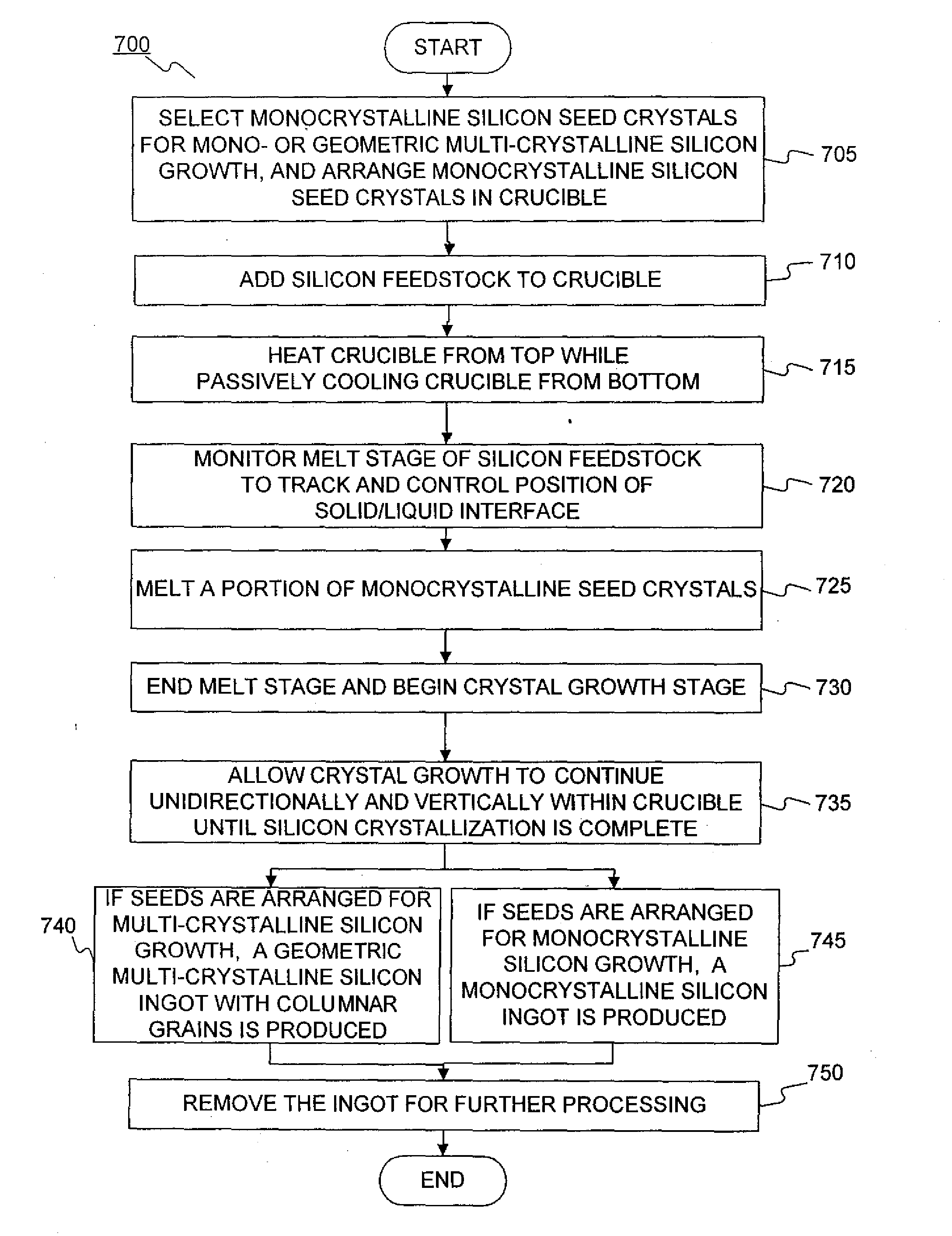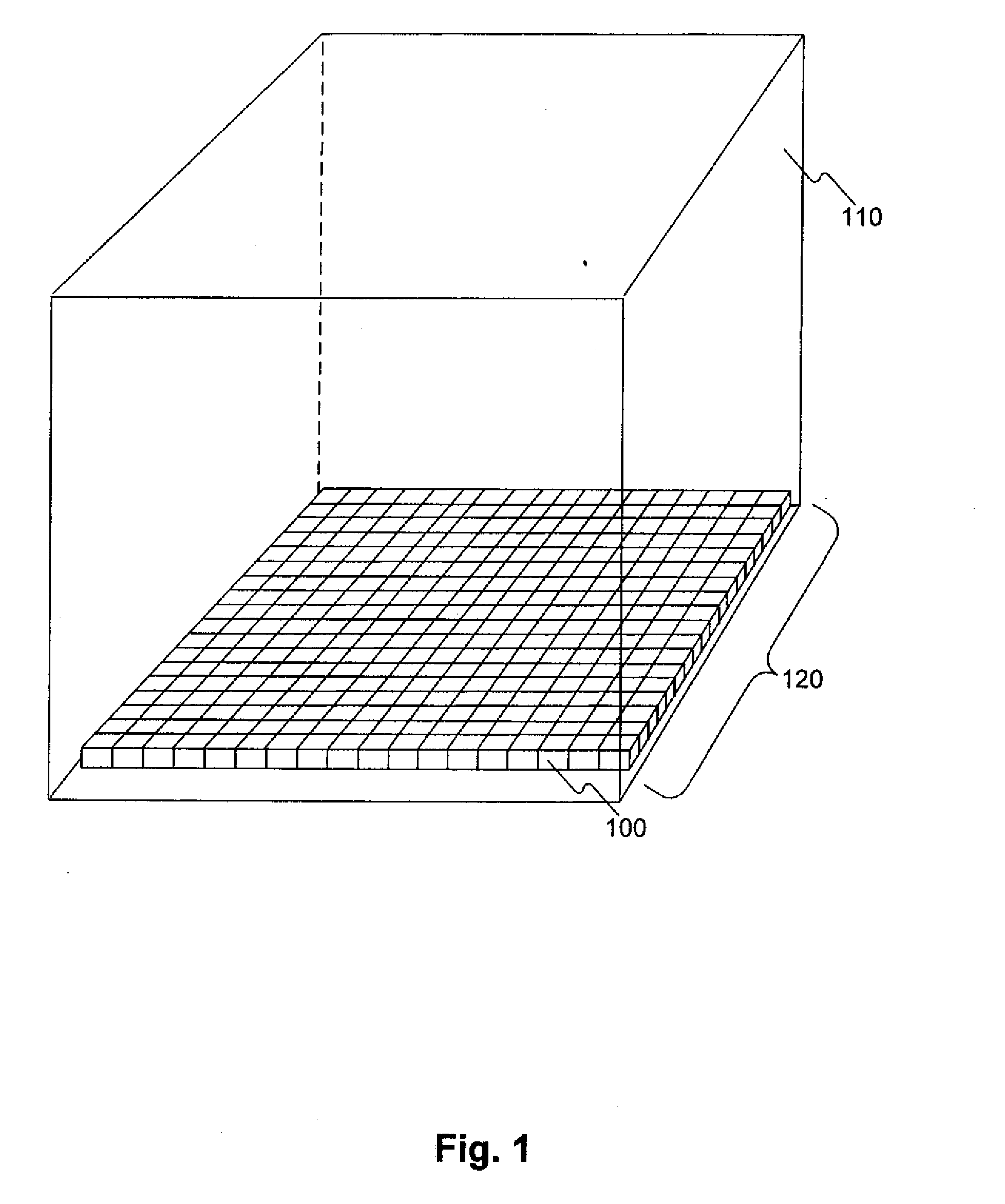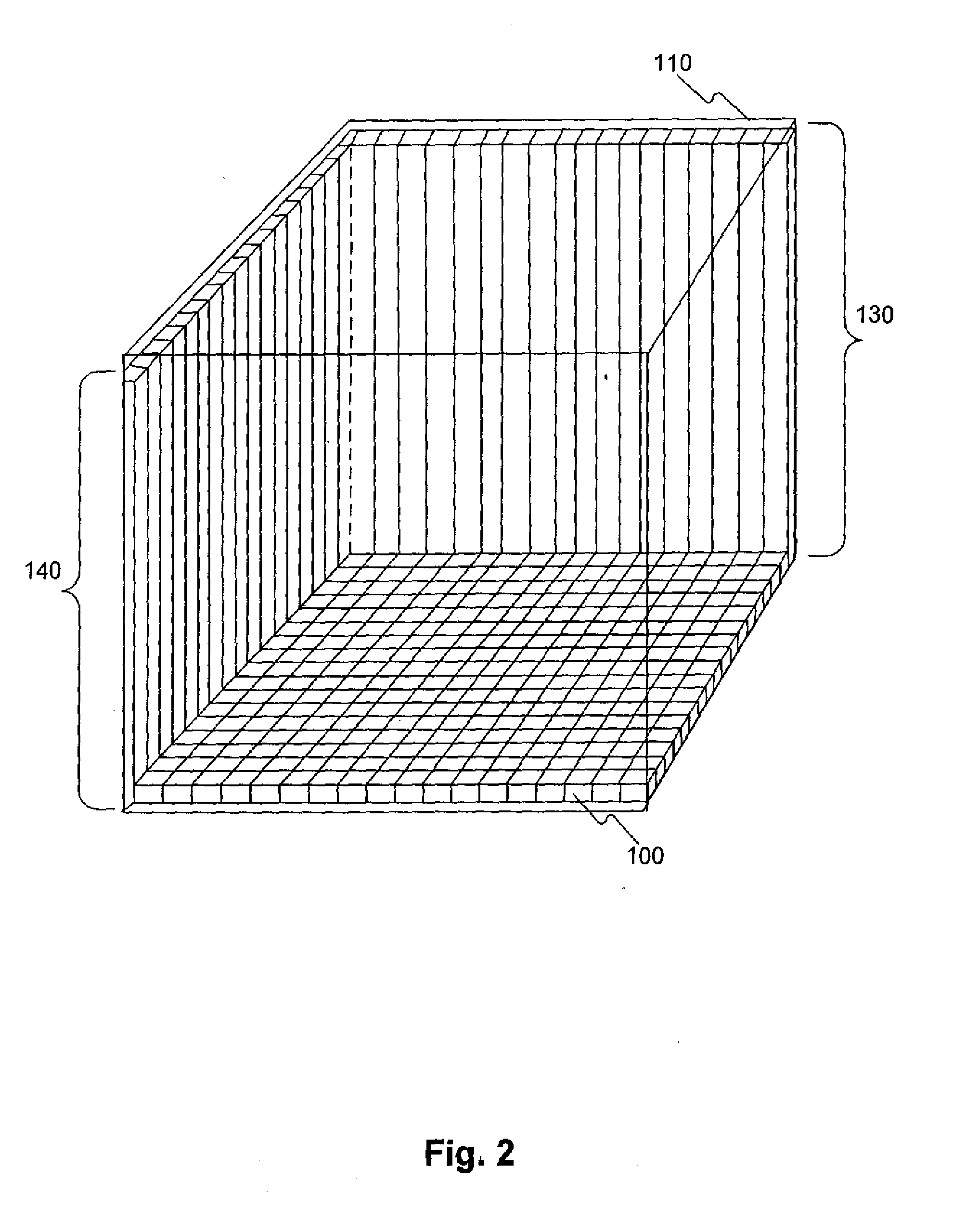Methods and Apparatuses for Manufacturing Monocrystalline Cast Silicon and Monocrystalline Cast Silicon Bodies for Photovoltaics
- Summary
- Abstract
- Description
- Claims
- Application Information
AI Technical Summary
Benefits of technology
Problems solved by technology
Method used
Image
Examples
example 1
[0101]Seed preparation: A boule of pure Czochralski (CZ) silicon (monocrystalline), obtained from MEMC, Inc. and having 0.3 ppma of boron, was cut down along its length using a diamond coated band saw so that it had a square cross section measuring from 14 cm per side. The resulting block of monocrystalline silicon was cut through its cross section using the same saw into slabs having a thickness of about 2 cm to about 3 cm. These slabs were used as monocrystalline silicon seed crystals, or “seeds.” The (100) crystallographic pole orientation of the silicon boule was maintained. The resulting single crystal silicon slabs were then arranged in the bottom of a quartz crucible so that the (100) direction of the slabs faced up, and the (110) direction was kept parallel to one side of the crucible. The quartz crucible had a square cross section with 68 cm on a side, a depth of about 40 cm, and a wall thickness of about 1.8 cm. The slabs were arranged in the bottom of the crucible with th...
example 2
[0104]Seed preparation: Seeding was accomplished as in Example 1, except that the monocrystalline silicon seeds were cut so that the (110) direction was at 45 degrees from the side of the square seeds for half of the seeds, while the other half had an angle of approximately 20 degrees. The square pieces were layered in the bottom of the crucible in a checkerboard manner alternating the two different seed orientations, i.e., the (110) direction had an angle of 45 degrees and 20 degrees from the orientation of the crucible sides. Relative to one another, the seeds had either 25 degrees or 155 degrees of misorientation. However, due to size mismatches of the square-shaped seeds, some gaps in the seeding layer were left uncovered. The crucible measured approximately 33 cm on each of the square sides and approximately 22 cm tall.
[0105]Casting: The crucible containing the seeds and a separate crucible containing a total of 56 kg of feedstock silicon chunks were loaded into a Ubiquitous Ca...
example 3
[0106]Seed preparation: Seeding was accomplished with 23 kg of square, (100), plates used to line the bottom of a crucible, providing a coverage area of 63 cm×63 cm and a thickness ranging from 3 cm in the center to 1.8 cm at the sides. All plates were arranged with their (110) directions at 45° from the walls of the crucible.
[0107]Casting: The crucible containing the seeds was filled with an additional total of 242 kg of feedstock silicon chunks, representing a mix of intrinsic silicon, silicon recycled from previous ingots, and double-cast silicon with a p-type resistivity greater than 9 ohm-cm. The charge of silicon in the crucible was loaded into a one-stage directional solidification furnace. The crucible (with the seeds inside) was heated up to a temperature of 1550° C., while the bottom was cooled by opening the insulation to 12 cm. The solid-liquid interface remained substantially flat during melting, such that at the end of melting, no part of the seed was melted through. T...
PUM
 Login to View More
Login to View More Abstract
Description
Claims
Application Information
 Login to View More
Login to View More - R&D
- Intellectual Property
- Life Sciences
- Materials
- Tech Scout
- Unparalleled Data Quality
- Higher Quality Content
- 60% Fewer Hallucinations
Browse by: Latest US Patents, China's latest patents, Technical Efficacy Thesaurus, Application Domain, Technology Topic, Popular Technical Reports.
© 2025 PatSnap. All rights reserved.Legal|Privacy policy|Modern Slavery Act Transparency Statement|Sitemap|About US| Contact US: help@patsnap.com



